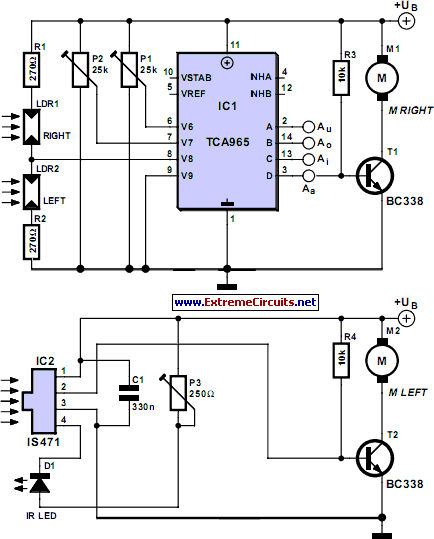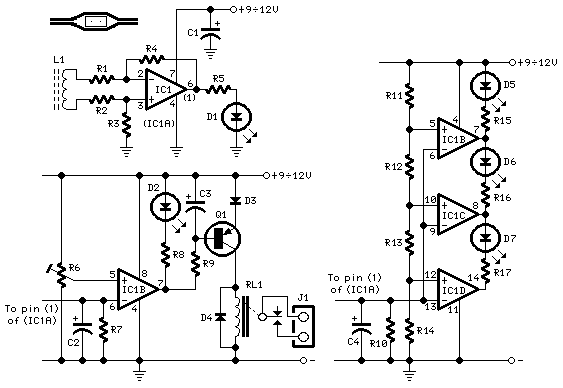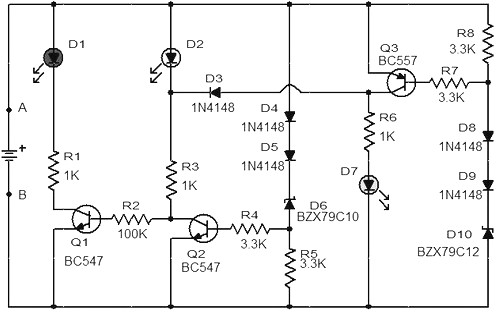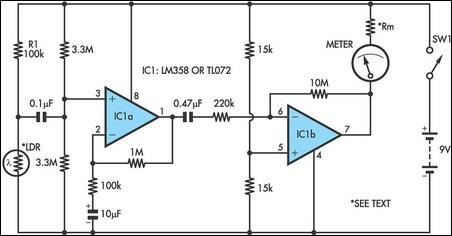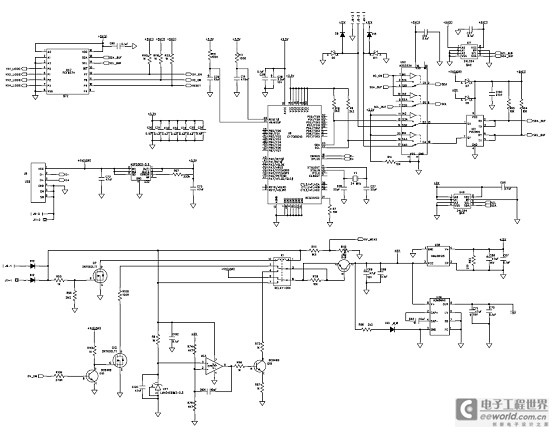
First-Response Monitor with SCR (Quiz Alarm)
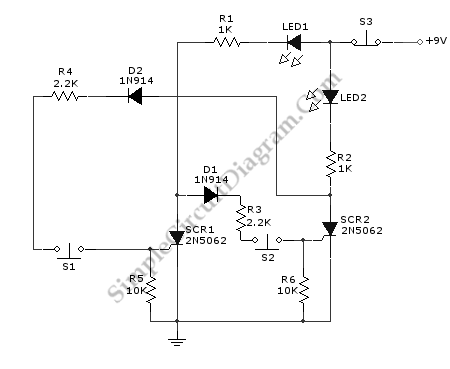
A pair of cross-coupled SCRs can be utilized to create a first-response monitor circuit, as illustrated in the schematic diagram below. The first-response circuit is...
In the context of electronic monitoring systems, a first-response monitor circuit employing cross-coupled Silicon Controlled Rectifiers (SCRs) is designed to detect and respond to specific conditions or events. The circuit typically consists of two SCRs configured such that the triggering of one SCR can influence the operation of the other, thereby creating a feedback loop that enhances the sensitivity and reliability of the monitoring function.
The circuit operates by utilizing the inherent properties of SCRs, which are semiconductor devices capable of controlling current flow. When a triggering signal is applied to the gate of the first SCR, it enters the conductive state, allowing current to flow through it. This action can generate a voltage change that is fed back to the gate of the second SCR, causing it to turn on as well. This cross-coupling mechanism ensures that the circuit remains in a stable state until the monitored condition changes, at which point the SCRs can reset and signal an alarm or take another action.
The design of the first-response monitor circuit can incorporate additional components such as resistors, capacitors, and diodes to refine the response time and sensitivity. The choice of these components will depend on the specific application requirements, including the types of signals being monitored and the desired speed of response.
Overall, the use of cross-coupled SCRs in a first-response monitor circuit provides a robust solution for applications requiring immediate detection and response to critical events, making it suitable for various safety and alarm systems in industrial and commercial environments.A pair of cross-coupled SCRs can be used to build a first-response monitor circuit, as shown in the schematic diagram below. First-response circuit is.. 🔗 External reference
In the context of electronic monitoring systems, a first-response monitor circuit employing cross-coupled Silicon Controlled Rectifiers (SCRs) is designed to detect and respond to specific conditions or events. The circuit typically consists of two SCRs configured such that the triggering of one SCR can influence the operation of the other, thereby creating a feedback loop that enhances the sensitivity and reliability of the monitoring function.
The circuit operates by utilizing the inherent properties of SCRs, which are semiconductor devices capable of controlling current flow. When a triggering signal is applied to the gate of the first SCR, it enters the conductive state, allowing current to flow through it. This action can generate a voltage change that is fed back to the gate of the second SCR, causing it to turn on as well. This cross-coupling mechanism ensures that the circuit remains in a stable state until the monitored condition changes, at which point the SCRs can reset and signal an alarm or take another action.
The design of the first-response monitor circuit can incorporate additional components such as resistors, capacitors, and diodes to refine the response time and sensitivity. The choice of these components will depend on the specific application requirements, including the types of signals being monitored and the desired speed of response.
Overall, the use of cross-coupled SCRs in a first-response monitor circuit provides a robust solution for applications requiring immediate detection and response to critical events, making it suitable for various safety and alarm systems in industrial and commercial environments.A pair of cross-coupled SCRs can be used to build a first-response monitor circuit, as shown in the schematic diagram below. First-response circuit is.. 🔗 External reference
